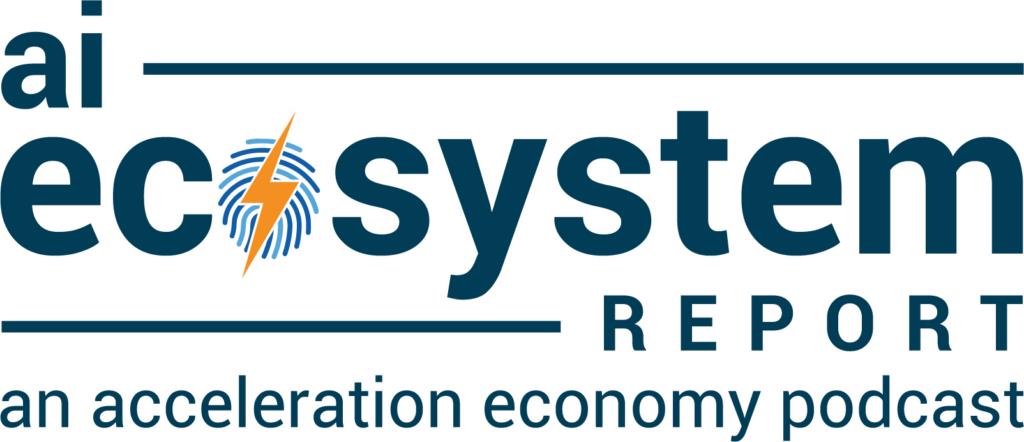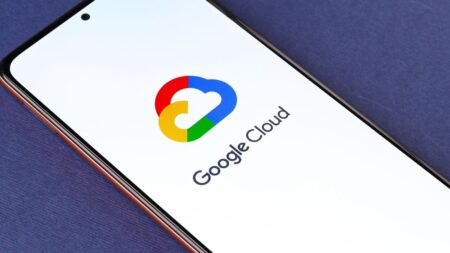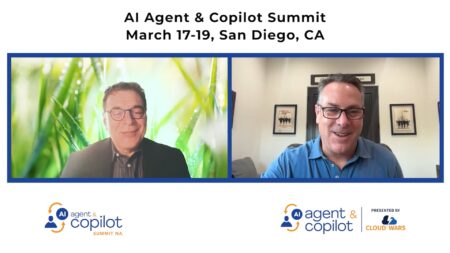The context and purpose behind this series: “The 17 Companies Reshaping the Landscape of Enterprise AI“.
Who They Are
When you hear “Microsoft“, for many, this conjures different thoughts for different people, such as “massive company“, Bill Gates or Steve Ballmer, Windows, and Xbox.
Those thoughts represent more current thinking, but back in 1975, little did we know that Microsoft would become the powerhouse it is today.

“You know, even when we wrote down at Microsoft in 1975, ‘a computer on every desk and in every home,’ we didn’t realize, oh, we’ll have to be a big company.”
Bill Gates (circa 2011)
Today, Microsoft is commanding a massive market cap north of $2 trillion. This growth can be largely attributed to the visionary leadership of CEO Satya Nadella who took the helm in 2014. In addition, insights from the Board of Directors have helped guide the company to where it is today.
| Reid Hoffman | Partner, Greylock Partners |
| Hugh Johnston | Vice-Chairman and Chief Financial Officer, PepsiCo, Inc. |
| Teri List | Former Executive Vice President and Chief Financial Officer, Gap, Inc. |
| Satya Nadella | Chairman and Chief Executive Officer, Microsoft Corporation |
| Sandra E. Peterson | Operating Partner, Clayton, Dubilier & Rice |
| Penny Pritzker | Founder and Chairman, PSP Partners |
| Charles W. Scharf | Chief Executive Officer and President, Wells Fargo & Company |
| John W. Stanton | Chairman, Trilogy Partnerships |
| John W. Thompson | Lead Independent Director, Microsoft Corporation |
| Emma Walmsley | Chief Executive Officer, GlaxoSmithKline |
| Padmasree Warrior | Founder, President & CEO, Fable Group Inc. |
What They Do
It’s a given that Microsoft has a plethora of business applications that many have used for years. For example, Outlook, Word, Excel, PowerPoint, and Microsoft Teams are business essentials for companies around the world.
But, to narrow the scope a bit, the focus here is on their artificial intelligence solutions. The best place to start is with Microsoft Azure. Why? Well, Microsoft’s growth for its FY21 Q4 can be largely attributed to the “Azure revenue growth of 51%“.
63% of enterprises are currently running apps on Microsoft Azure, second only to AWS.

Microsoft Azure AI Platform
According to Microsoft, the Azure AI Platform provides “access high-quality vision, speech, language, and decision-making AI models through simple API calls“. Additionally, this allows you to “create your own machine learning models with tools like Jupyter Notebook, Visual Studio Code, and open-source frameworks like TensorFlow and PyTorch“.
The platform is broken down into four unique offerings:
[source: https://azure.microsoft.com/en-us/overview/ai-platform/]
- Azure Applied AI Services: Specialized AI services for specific business scenarios.
- Modernize business processes with task-specific low-code AI to solve for common scenarios.
- Accelerate development with built-in business logic that enables you to launch solutions in days—not months.
- Run responsibly anywhere with security that extends from the cloud to intelligent edge.
- Azure Cognitive Services: A comprehensive family of customizable cognitive APIs for vision, speech, language, and decision making.
- Easily access sophisticated AI models with the most comprehensive portfolio of domain-specific AI capabilities on the market.
- Build confidently with the first AI services to achieve human parity in computer vision, speech, and language.
- Deploy anywhere from the cloud to the edge with containers.
- Get started quickly—no machine-learning expertise required.
- Azure Machine Learning: An end-to-end platform for building, training, and deploying machine learning models.
- Develop with your choice of tools with Jupyter Notebook, drag-and-drop designer, and automated machine learning.
- Create and deploy models at scale using automated and reproducible machine learning workflows.
- Innovate responsibly with a rich set of built-in responsible capabilities to help you understand, protect, and control data, models and processes.
- Build your way with best-in-class support for open-source frameworks and languages including MLflow, Kubeflow, ONNX, PyTorch, TensorFlow, Python, and R.
- AI Infrastructure: Advanced, large-scale AI infrastructures and innovative training tools.
- Access large-scale infrastructure with hyper-clusters of thousands of state-of-the-art GPUs, providing AI accelerations that are interconnected with the latest high-bandwidth networks inside of every server.
- Enable hybrid and multi-cloud deployments with Azure Arc-enabled Kubernetes.
- Access a breadth of AI hardware with specialized hardware like FPGAs, the most comprehensive set of GPUs, and an array of general-purpose CPUs.
Project Bonsai
Another interesting solution that Microsoft is working on is called Project Bonsai. This project is, according to Microsoft, “a machine teaching service for creating intelligent industrial control systems using simulations“.
In other words, this solution allows creators to build AI-powered autonomous systems. However, the goal is to provide low-code AI to citizen developers without the need for data scientists.

Most Unique / Impactful Application
The struggle to understand low-code AI in a practical way is what many are seeking. To that end, Microsoft is providing ways for people to make sense of it through its Machine Teaching.
According to Microsoft’s Machine Teaching site:
“The machine teaching deep reinforcement learning platform combines key innovations that simplify the development, training, and deployment of AI models giving you the tools to build subject matter expertise into complex industrial systems for your organization.”
The site provides interactive ways to get started in areas that are important to you. For example, AI can be infused into CNC machine calibration.

Additional concepts from the site are focused on the “Factory of the Future“, “Motion Control“, and “Smart Buildings“.
The value of going this route is that you can better understand the role of low-code AI and machine learning.
Who They Have Impacted
The PepsiCo brand and products are known the world over. From soft drinks and energy drinks to snacks, consumers are eating it up, quite literally. And, to continue this hunger journey, PepsiCo was looking to boost the “snack bar” for its billion-dollar brand of Cheetos.
PepsiCo partnered with Microsoft to help keep the Cheetos product consistently perfect. This was done through the low-code AI solution Project Bonsai. The process uses “data from a computer vision system to make recommendations or adjustments any time a product falls out of spec”.
This solution was a huge success at a pilot plant which then convinced PepsiCo to roll this out to a production plant. And, it was important to get things perfect for Sean Eichenlaub, a senior principal engineer at PepsiCo. He noted that:
With faster corrections, we can avoid the potential issues of going out of spec, such as having to discard product, or problems with packaging and waste.
Considering that massive logistics and supply chain for just the Cheetos products, getting things right is vital. The Project Bonsai solution used the data from the computer vision system and could recognize any variance that would need immediate attention.
The outcome of this project was stated best by Kevin Lin, an associate principal engineer at PepsiCo. He said, “Project Bonsai allows us to utilize [low-code AI] technology for the things it does best and our employees for the things they do best. The two complement each other and so far, we’ve seen great results.”








